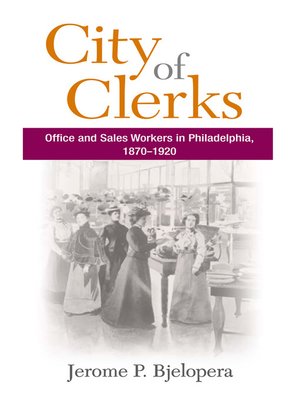City of Clerks
ebook ∣ Office and Sales Workers in Philadelphia, 1870-1920 · Working Class in American History
By Jerome P. Bjelopera

Sign up to save your library
With an OverDrive account, you can save your favorite libraries for at-a-glance information about availability. Find out more about OverDrive accounts.
Find this title in Libby, the library reading app by OverDrive.



Search for a digital library with this title
Title found at these libraries:
| Library Name | Distance |
|---|---|
| Loading... |
Below the middle class managers and professionals yet above the skilled blue-collar workers, sales and office workers occupied an intermediate position in urban America's social structure as the nation industrialized. Jerome P. Bjelopera traces the shifting occupational structures and work choices that facilitated the emergence of a white-collar workforce. His fascinating portrait reveals the lives led by Philadelphia's male and female clerks, both inside and outside the workplace, as they formed their own clubs, affirmed their "whiteness," and challenged sexual norms.
A vivid look at an overlooked but recognizable workforce, City of Clerks reveals how the notion of "white collar" shifted over half a century.
| Contents Acknowledgments Introduction 1. Clerking and the Industrial-Era White-Collar Workforce 2. In the Office and the Store 3. Pursuing "Noble Endeavor": Educating ClericalA Workers at Peirce School 4. After Hours: How the Clerical Workforce Entertained Itself 5. Workplace Virtues, Rebellion, and Race 6. Home and Neighborhood Conclusion Appendix: Occupational Rankings Notes Index |"Jerome P. Bjelopera's study of Philadelphia clerks in the fifty years surrounding the beginning of the twentieth century is an excellent and important addition to this growing body of literature that casts the methodological net of 'new' labor history across a more diverse spectrum of work experiences and workers."—Labor History|Jerome P. Bjelopera is an analyst for the Congressional Research Service.







